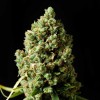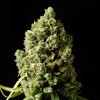The laws of nature dictate that all living things must go through a life cycle. The unicellular amoeba and the apex predators like tigers have distinct growth stages, and the marijuana plant it’s no different. Whether you intend to cultivate, harvest or process marijuana, understanding the plant and the various developmental stages it goes through is essential.
Knowing each stage and its duration helps identify the specific needs of the marijuana plant at any given time. This knowledge will tell you when to ventilate, prune, water, and finally harvest your marijuana.
So you get the point, a firm grasp of the life cycle of marijuana is crucial for growing the plant. Fortunately, this post covers the four distinct stages that complete the cannabis life cycle, with the key points including:
-
The duration of the entire marijuana life cycle
-
How to grow cannabis successfully
-
How to identify the sex of your seeds
-
Ways to stimulate germination
-
Factors essential for growth at each stage
-
The distinctive features of the female and male marijuana plant
Let’s dive right into it.
How Long Does It Take Marijuana Plants to Mature?
The typical marijuana growing cycle lasts between 10 to 32 weeks or anywhere from three to eight months. It takes you less time if you choose to go with autoflower or clone seeds. As you’ll soon understand, the stage between when the plant grows from a seedling until it produces flowers accounts for most of the variability in the duration. Keeping this in mind, let’s look at each development stage.
The Four Marijuana Growth Stages
-
Germination (1-10 days)
All marijuana plants begin their life cycle as seeds. Like humans, plants undergo sexual reproduction to transfer their genes to the next generation. Therefore, you can categorize cannabis plants into male and female groups. If you want to grow marijuana for its flowers, you’ll need to look for female plants because they are the only ones that produce massive consumable flowers.
Consequently, you want to get high-quality and feminized marijuana seeds from seed banks for cultivation. After obtaining your feminized seeds, you can proceed with their germination. Each seed requires some attention and care to sprout. The two conditions you needed to control at the germination stage include:
-
Heat
-
Water
Most growers use the simple paper towel method to bring seeds out of dormancy, although there are other ways to germinate a marijuana seed.
The paper towel includes the following steps:
-
Water-soak four paper towels, place two on a flat solid surface like a plate, and spread out feminized marijuana seeds on the damp towel.
-
Position the remaining two towels in another place and cover the first plate with the second with your seeds inside.
-
Maintain a room temperature of about 70 to 90˚F and always ensure your paper towels are wet.
Within 24 hours to seven days, you will notice a white taproot emerging from the seeds. Once you see the taproot, transfer them to a growing medium like soil or hydroponics setup. Congratulations, you have crossed the first stage, but the work has just started.
-
Seedling (2-3 weeks)
Your germinated seeds will continue growing as seedlings and break through your growing medium as tiny marijuana plants. The seedling stage produces two outward opening leaves for the reception of sunlight. Following these are the familiar cannabis leaves going upwards and the root system growing downwards.
Depending on your strain and growing medium, this stage can last for 2-3 weeks. However, some marijuana plants persist in the seedling stage for as long as six weeks. The critical environmental factors you want to maintain during the seedling stage include:
-
Temperature - 77˚F
-
Humidity - 60%
-
Light cycle - 16 hours per day
-
Fertilizer - Nitrogen-rich
Always bear in mind that these conditions are merely rules of thumb. As such, you should first check out the specific requirements of your chosen strain. Once your seedlings have favorable conditions, they’ll develop with vibrant green color. When seedlings begin to produce leaves with 5 to 7 blades, you know they’re mature.
-
Vegetative (3-8 weeks)
When the seedlings are fully matured, you should transfer them into larger pots, ushering them into their third growth stage. Your plants will grow quickly and absorb more carbon dioxide, water, and nutrients in the vegetative stage.
Knowing your plants will require these resources for healthy and rapid growth means you should ensure they’re all available in the right amount. Your plant will grow vertically and gain about 2 inches in height in 24 hours. Also, the defining features of your chosen strain will become noticeable at this stage.
Indica will generally appear short and bushy while Sativa grows narrower and taller. This state also enables you to spot any males hidden in your crop. That’s because female marijuana plants start producing noticeably white pistils as your cannabis plants reach maturity in their vegetative cycle. On the contrary, males develop pollen sacs. Therefore, you need to remove them immediately to prevent them from pollinating the females and destroying your harvest.
Generally, the optimal conditions for the vegetative state are as follows:
-
Temperature - 68 and 77˚F
-
Humidity - 50% and 70%
-
Light cycle - 16-24 hours
4. Flowering (6-8 weeks)
The final stage of growth also happens to be the most critical phase for all marijuana growers. Studies suggest you reduce the light exposure of your crop to 12-12, where they get equal hours of light and darkness.
You will notice a sticky resin on the leaves of your marijuana plants when they’re fully flowered. It’s a sign of the well-developing cannabinoids in your crop. The potency of the marijuana you produce depends mainly on the duration of the flowering stage and the environmental factors.
Therefore, you want to maintain the following conditions:
-
Temperature - 68 and 77˚F
-
Humidity - 50%
-
Fertilizer - phosphorus, potassium
Next, you have to decide the best time to harvest. Ideally, it is generally advisable to harvest when the pistils of your crop start turning brown and leaves turn yellowish. Remember, harvesting at the right time ensures the perfect taste, weight, smell, and potency.
Conclusion
There you have the four essential stages that consist of the life of a marijuana plant. This information and understanding come in handy when you nurse your cannabis seeds. However, before planting your first batch, it’s vital to check the laws in your state. Illegally cultivating weed can attract severe penalties. Hence, you always want to remain compliant with the rules and regulations. And that’s the final tip to help make your marijuana growing experience worthwhile.




